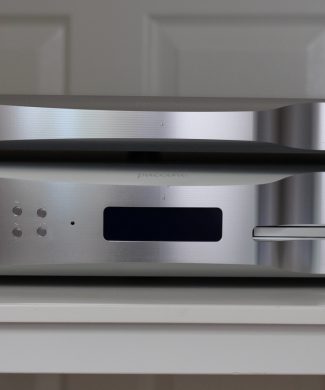W20SE is the music server of choice for the finest audio systems in the world. Designed to be used with high-performance digital-to-analog converters, the Aurender W20SE is one of the few music servers to provide support for external word clocks used in professional audio and recording studios. Additionally, a dual-wire mode AES/EBU used by some reference grade digital-to-analog converters to allow separate transmission of left and right channels for better fidelity. However, even without using an external word clock input or dual AES/EBU outputs, W20SE’s battery power supply provides a dramatically lower noise floor for a totally silent background. With a 4TB internal SSD and a 1TB SSD caching drive for playback, the W20SE is the ideal solution for even the most extensive high-resolution music collections.
In digital audio, jitter and noise in the audio signal can adversely affect the performance of digital-to-analog converters. The Aurender W20 was the world’s first music server to completely eliminate noise from AC power supplies and AC mains through the use of LiFePO4 (LFP) batteries to power the audio circuitry.W20SE uses the same scheme to minimize the noise in audio output. An FPGA-based All Digital Phase Locked Loop system with Oven-Controlled Crystal Oscillator (OCXO) clock is used to maintain long term jitter to below negligible levels and specially designed circuitry provides clean, noise-free power to the dedicated USB 2.0 digital audio output. A solid-state caching drive for playback isolated by extensive shielding using thick aluminum partitions also minimize and eliminate the many types of jitter and noise usually associated with the use of disk drives for playback.
External Word Clock Support
The protocol to send digital audio signal through COAX or AES/EBU is called SPDIF.
SPDIF sends clock and data together without a handshake. The DAC’s clock needs to follow the clock signal contained in the signal to avoid overflow or underrun. This operation of trying to sync to the clock in SPDIF can generate jitter in the DAC’s clock.
A better way is using the DAC’s clock and data only from the music source, however, this way sync cannot be guaranteed. To make the DAC’s clock act as the master clock and still remain in sync with the data, the audio source needs a master clock input which outputs the audio data in sync with the incoming master clock. This way jitter in the SPDIF connection from audio source to the DAC is virtually eliminated.
When the user wants to use separate master clock, music server with master clock input is needed as well as a DAC with master clock input.
Also, a word clock is typically used in recording studios to synchronize timing between digital devices ensuring jitter-free and time-perfect data transmission. W20SE can accept word clocks with the following frequencies: Master clock: 10MHz, 12.8MHz, Word clock: 44.1KHz and 48KHz in multiples from 1 to 512. W20SE supports both word clock (dCS, DACs or similar) or Master Clock (MSB DACs or similar) inputs.


 to enquire about this product!
to enquire about this product!






